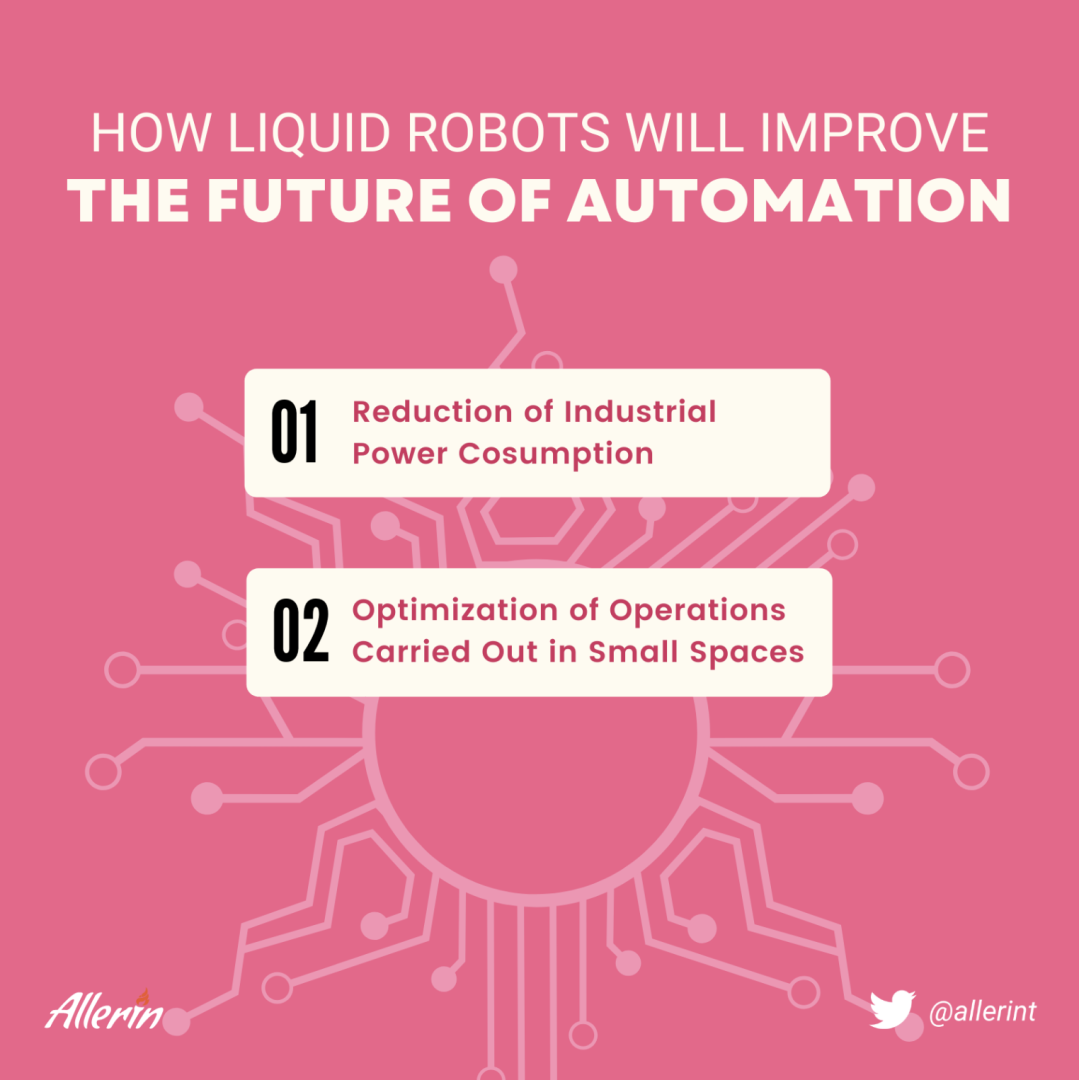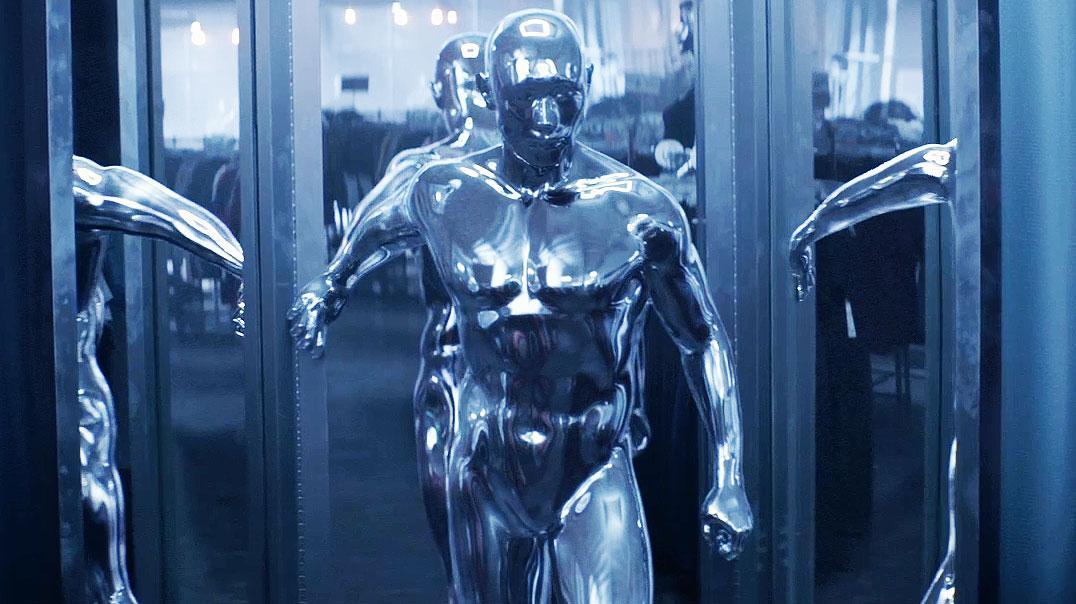Comments
- No comments found

Robots have been used for decades to explore and maintain various environments, from space to deep sea.
The latest advancement in robotics technology is the development of liquid robots, also known as soft robots, which have the potential to revolutionize underwater exploration and maintenance. Unlike traditional hard robots, which are limited in their maneuverability and flexibility, liquid robots are designed to move and manipulate in water environments, making them ideal for underwater exploration and maintenance.

Liquid robots are a type of soft robot that is designed to move and manipulate in water environments. They are made of flexible, elastic materials such as silicone, which allows them to bend and twist in ways that traditional hard robots cannot. Liquid robots are powered by hydraulic or pneumatic systems, which can be controlled remotely to manipulate the robot's movements and actions.
Liquid robots work by using their soft, flexible bodies to move and manipulate in water environments. They are powered by hydraulic or pneumatic systems, which allow them to move and perform various actions such as gripping and releasing objects, cutting through debris, and collecting samples. Liquid robots can be controlled remotely, either by a human operator or through autonomous programming.
One of the significant advantages of liquid robots is their flexibility and maneuverability in water environments. They can move and manipulate in ways that traditional hard robots cannot, allowing them to explore and maintain underwater structures and environments more effectively. Liquid robots are also less likely to damage delicate marine environments, making them ideal for scientific research and environmental monitoring.

Another advantage of liquid robots is their ability to perform complex tasks autonomously. They can be programmed to perform specific actions, such as collecting samples or repairing underwater structures, without human intervention. This can help reduce the need for human divers to perform dangerous and costly underwater maintenance tasks.
There are numerous use cases for liquid robots in various industries, including scientific research, environmental monitoring, and underwater maintenance. Some examples include:
Scientific Research: Liquid robots can be used to explore and study marine life and ecosystems. They can collect samples and data without disturbing the delicate environment, allowing researchers to study the impact of human activity on marine life and ecosystems.
Environmental Monitoring: Liquid robots can be used to monitor water quality, detect oil spills, and assess the health of underwater ecosystems. They can also be used to clean up debris and pollutants in water environments.
Underwater Maintenance: Liquid robots can be used to inspect and repair underwater structures such as pipelines, dams, and offshore platforms. They can also be used to clean and maintain underwater equipment such as turbines and sensors.
While liquid robots have enormous potential for underwater exploration and maintenance, there are still several challenges that need to be addressed. One of the significant challenges is the development of more advanced sensors and control systems that can operate in harsh underwater environments. Another challenge is the development of more efficient power sources that can provide enough energy for extended underwater missions.
One of the most important challenges facing liquid robots is the development of more advanced sensors and control systems that can operate in harsh underwater environments. The sensors and control systems used in liquid robots need to be robust enough to withstand the high pressure, saltwater, and other environmental factors that they will encounter during operation. There is also another major challenge, which is the development of more efficient power sources that can provide enough energy for extended underwater missions. The power requirements for liquid robots can be significant, and traditional batteries may not be sufficient to power them for extended periods. Researchers are currently exploring new power sources, such as fuel cells and energy-harvesting systems, that can provide the necessary energy for liquid robots to operate for longer periods.

The future of liquid robots looks promising. As technology continues to advance, we can expect to see more advanced liquid robots that are capable of performing more complex tasks autonomously. These robots will play a critical role in exploring and maintaining underwater environments, contributing to scientific research, environmental monitoring, and the development of sustainable energy sources.
Liquid robots represent the future of underwater exploration and maintenance, offering numerous advantages over traditional hard robots. Their flexibility and maneuverability in water environments, coupled with their ability to perform complex tasks autonomously, make them ideal for a range of applications, from scientific research to environmental monitoring and underwater maintenance.
While there are still challenges that need to be addressed, such as the development of more advanced sensors and power sources, the future of liquid robots looks promising. As technology continues to advance, we can expect to see more sophisticated liquid robots that can perform even more complex tasks and operate for longer periods underwater.
Liquid robots represent a significant step forward in the field of underwater exploration and maintenance, offering a more efficient, cost-effective, and environmentally friendly way to explore and maintain underwater structures and environments. With continued investment and development, liquid robots have the potential to revolutionize the way we approach underwater exploration and maintenance, leading to more significant scientific discoveries and advances in environmental protection and sustainable energy development.
Naveen is the Founder and CEO of Allerin, a software solutions provider that delivers innovative and agile solutions that enable to automate, inspire and impress. He is a seasoned professional with more than 20 years of experience, with extensive experience in customizing open source products for cost optimizations of large scale IT deployment. He is currently working on Internet of Things solutions with Big Data Analytics. Naveen completed his programming qualifications in various Indian institutes.
Leave your comments
Post comment as a guest